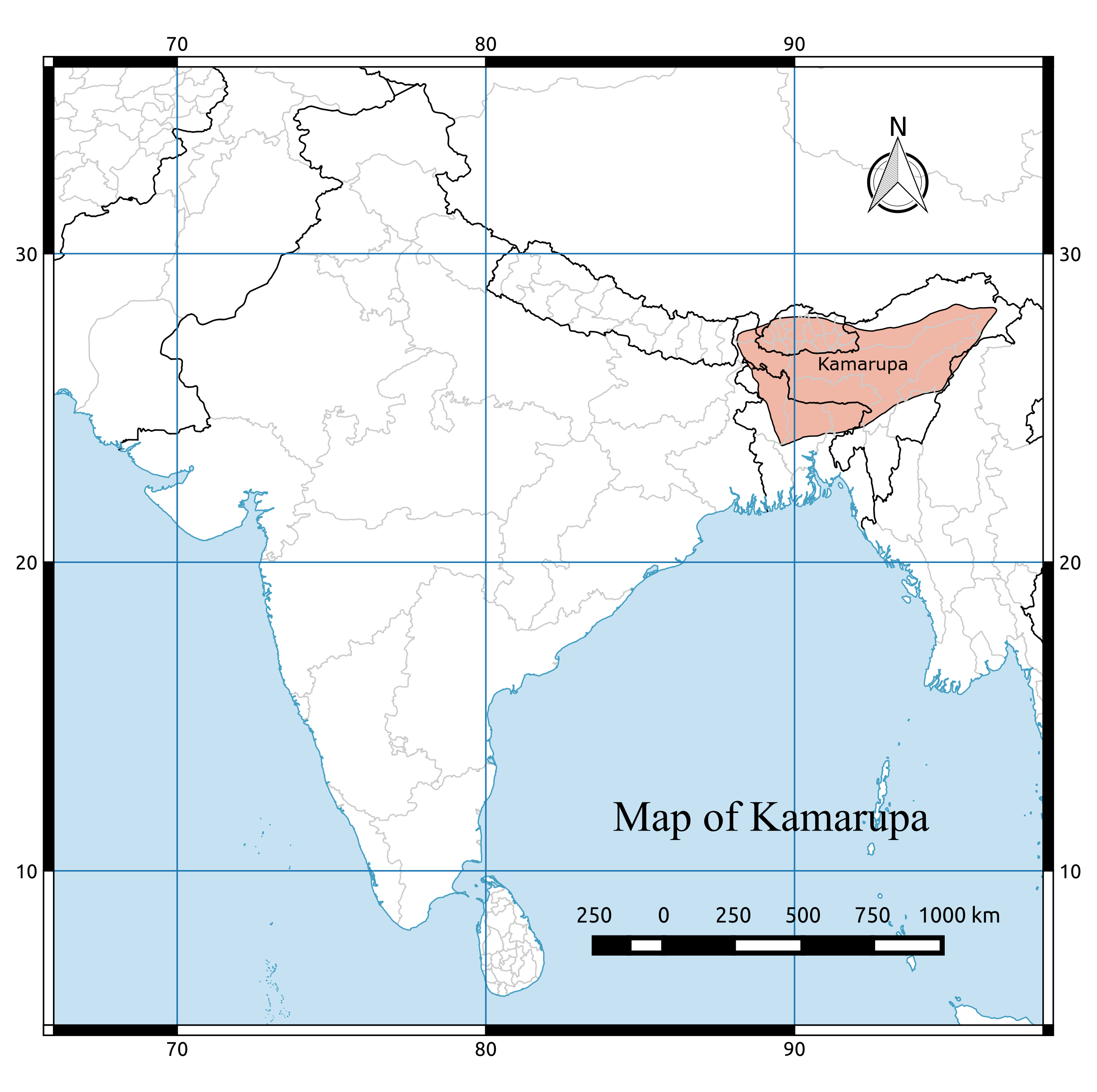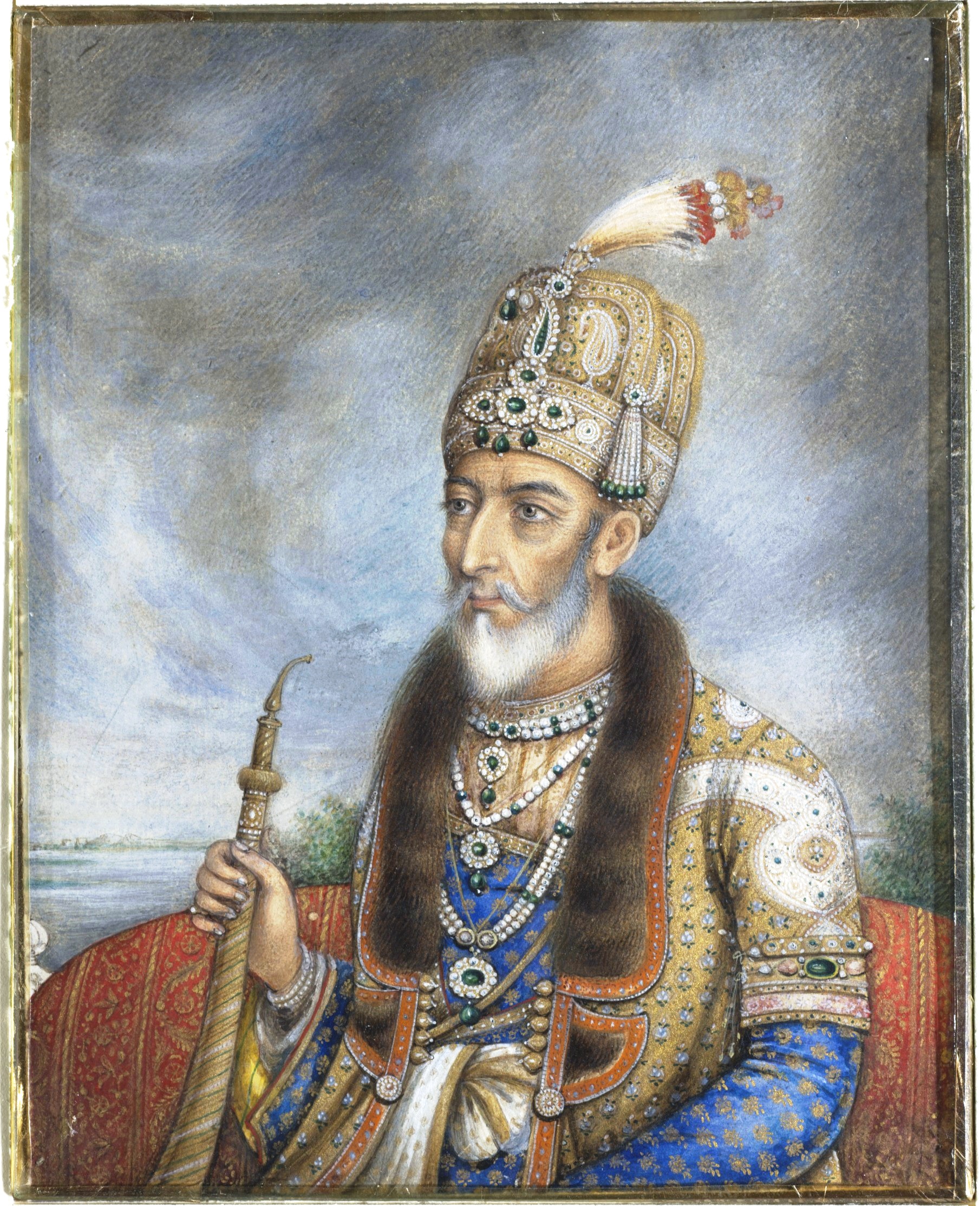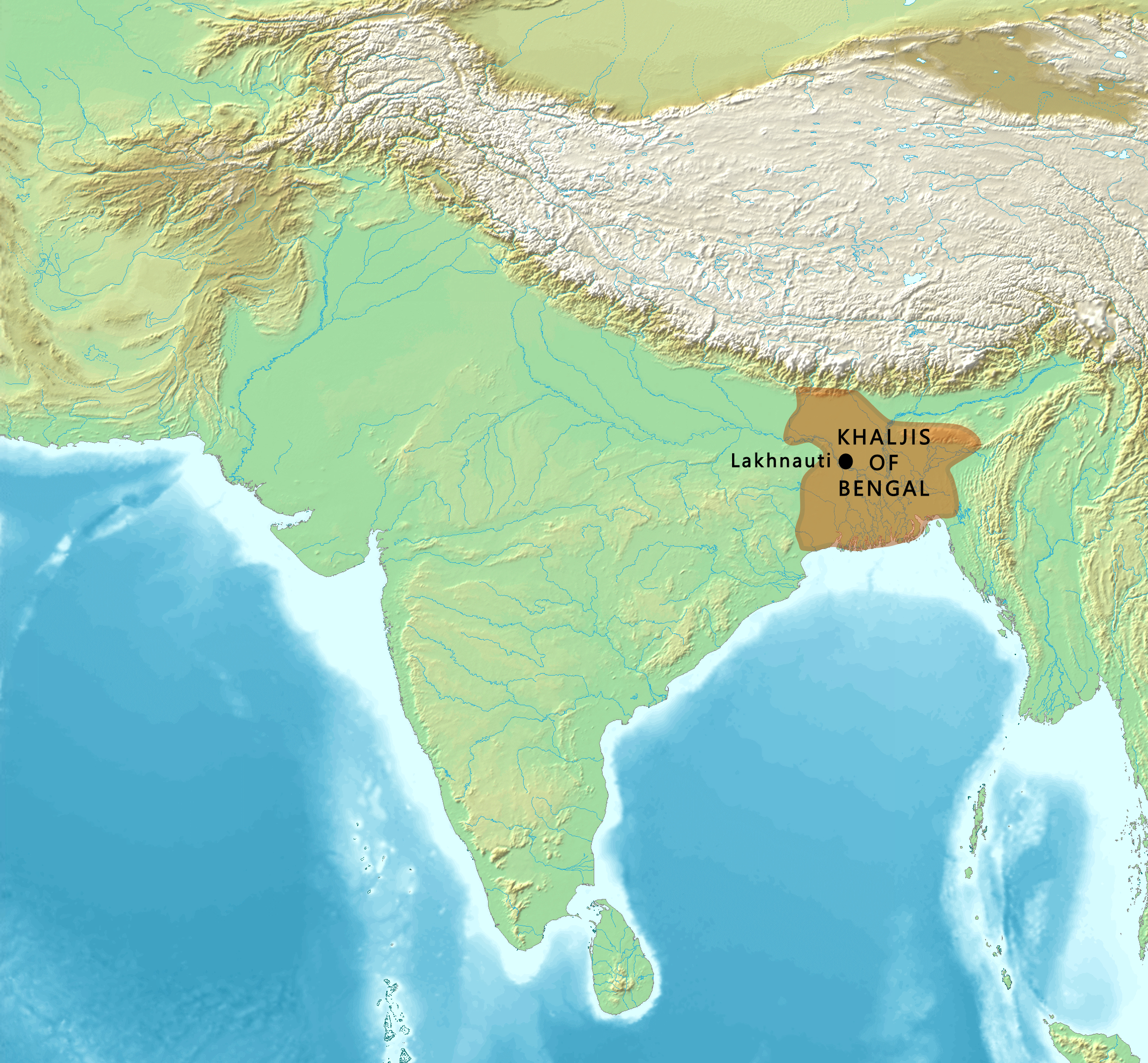|
History Of Assam
File:Major kingdoms of Assam.png, upright=1.3, Major kingdoms of Assam rect 50 50 650 120 Kamarupa Kingdom rect 45 240 160 310 Kamata Kingdom rect 165 240 300 310 Bhuyan chieftains rect 305 240 415 310 Ahom Kingdom rect 425 240 540 310 Chutiya Kingdom rect 550 240 660 310 Kachari Kingdom rect 4 425 80 495 Koch Bihar rect 120 425 190 495 Koch Hajo rect 125 660 640 760 History of Assam The history of Assam is the history of a confluence of people from the east, west, south and the north; the confluence of the Austroasiatic, Tibeto-Burman (Sino-Tibetan), Tai and Indo-Aryan cultures. Although invaded over the centuries, it was never a vassal or a colony to an external power until the third Burmese invasion in 1821, and, subsequently, the British ingress into Assam in 1824 during the First Anglo-Burmese War. The Assamese history has been derived from multiple sources. The Ahom kingdom of medieval Assam maintained chronicles, called Buranjis, written in the A ... [...More Info...] [...Related Items...] OR: [Wikipedia] [Google] [Baidu] |
Kamarupa
Kamarupa (; also called Pragjyotisha or Pragjyotisha-Kamarupa), an early state during the Classical period on the Indian subcontinent, was (along with Davaka) the first historical kingdom of Assam. The Kamrupa word first appeared in the Samudragupta Allahabad Edict before that there is no mention of existence of this word. Though Kamarupa prevailed from 350 to 1140 CE, Davaka was absorbed by Kamarupa in the 5th century CE."As regards the eastern limits of the kingdom, Davaka was absorbed within Kamarupa under Kalyanavarman and the outlying regions were brought under subjugation by Mahendravarman." Ruled by three dynasties from their capitals in present-day Guwahati, North Guwahati and Tezpur, Kamarupa at its height covered the entire Brahmaputra Valley, parts of North Bengal, Bhutan and northern part of Bangladesh, and at times portions of what is now West Bengal, Bihar and Sylhet. Though the historical kingdom disappeared by the 12th century to be replaced by ... [...More Info...] [...Related Items...] OR: [Wikipedia] [Google] [Baidu] |
Buranji
Buranjis (Ahom language: ''ancient writings'') are a class of historical chronicles and manuscripts associated with the Ahom kingdom. There were written initially in the Ahom Language and later in the Assamese language as well. The Buranjis are an example of historical literature which is rare in India—they bear resemblance to Southeast Asian traditions of historical literature instead. The Buranjis are generally found in manuscript form (locally called ''puthi''), a number of these manuscripts have been compiled and published especially in the Assamese language. They are some of the primary sources of historical information of Assam's medieval past, especially from the 13th century to the colonial times in 1828; and they have emerged as the core sources for historiography of the region for the pre-colonial period. The details in the Buranjis regarding the Ahom-Mughal conflicts agree with those in the Mughal chronicles such as '' Baharistan'', '' Padshahnama'', ''Alamgirna ... [...More Info...] [...Related Items...] OR: [Wikipedia] [Google] [Baidu] |
Independence Of India
The Indian independence movement was a series of historic events in South Asia with the ultimate aim of ending British Raj, British colonial rule. It lasted until 1947, when the Indian Independence Act 1947 was passed. The first nationalistic movement took root in the newly formed Indian National Congress with prominent moderate leaders seeking the right to appear for Indian Civil Service examinations in British India, as well as more economic rights for natives. The first half of the 20th century saw a more radical approach towards self-rule. The stages of the independence struggle in the 1920s were characterised by the leadership of Mahatma Gandhi and Congress's adoption of Gandhi's policy of non-violence and Salt March, civil disobedience. Some of the leading followers of Gandhi's ideology were Jawaharlal Nehru, Vallabhbhai Patel, Abdul Ghaffar Khan, Maulana Azad, and others. Intellectuals such as Rabindranath Tagore, Subramania Bharati, and Bankim Chandra Chattopadhyay spr ... [...More Info...] [...Related Items...] OR: [Wikipedia] [Google] [Baidu] |
Treaty Of Yandaboo
The Treaty of Yandabo ( ) was the peace treaty that ended the First Anglo-Burmese War. The treaty was signed on 24February 1826, nearly two years after the war formally broke out on 5March 1824, by General Sir Archibald Campbell on the British side, and the Governor of Legaing Maha Min Hla Kyaw Htin from the Burmese side, without any due permission and consent of the Ahom kingdom, Kachari kingdom or the other territories covered in the treaty. With the British army at Yandabo village, only from the capital Ava, the Burmese were forced to accept the British terms without discussion. According to the treaty, the Burmese agreed to: * Cede to the British- Assam, Manipur, Rakhine (Arakan), and the Tanintharyi (Tenasserim) coast. * Cease all interference in Cachar region of Assam and the Jaintia Hills district. * Pay an indemnity of one million pounds sterling in four installments. * Allow an exchange of diplomatic representatives between Ava and Calcutta. * Sign a commercial tr ... [...More Info...] [...Related Items...] OR: [Wikipedia] [Google] [Baidu] |
Bakhtiyar Khilji
Ikhtiyār al-Dīn Muḥammad Bin Bakhtiyār Khaljī, also known as Bakhtiyar Khalji, was a Turko-Afghan Military General of the Ghurid ruler Muhammad of Ghor, who led the Muslim conquests of the eastern Indian regions of Bengal and parts of Bihar and established himself as their deputy-ruler/governor, He was the founder of the Khalji dynasty of Bengal, ruling Bengal for a short period, from 1203 to 1227 CE. Khalji's invasions of the Indian subcontinent between A.D. 1197 and 1206 led to mass flight and massacres of monks, and caused damage to the traditional Buddhist institutions of higher learning in Northern India. In Bengal, Khalji's reign was responsible for the displacement of Buddhism. The leading centre of teaching for Mahayana Buddhism was Nalanda. At the end of the 12th century, Bakhityar Khalji demolished the monastery in a brutal sacking . His rule is said to have begun the Muslim rule in Bengal, most notably those of Bengal Sultanate and Mughal Bengal. Bakhtiyar ... [...More Info...] [...Related Items...] OR: [Wikipedia] [Google] [Baidu] |
Bengal Sultanate
The Bengal Sultanate (Middle Bengali: , Classical Persian: ) was a Post-classical history, late medieval sultanate based in the Bengal region in the eastern South Asia between the 14th and 16th century. It was the dominant power of the Ganges-Brahmaputra Delta, with a network of mint towns spread across the region. The Bengal Sultanate had a circle of vassal states in the Indian subcontinent, including parts of Odisha in the southwest, parts of Bihar in the northwest, parts of Assam in the northeast, Arakan in the southeast, and Tripura in the east. The Bengal Sultanate controlled large parts of the eastern South Asia during its five dynastic periods, reaching its peak under Jalaluddin Muhammad Shah. Its raids and conquests reached Kingdom of Nepal, Nepal in the north, Brahmaputra valley (modern-day Assam) in the east, and Jaunpur Sultanate, Jaunpur and Varanasi in the west. It was reputed as a thriving trading nation. Its decline began with an interregnum by the Sur Empire, fo ... [...More Info...] [...Related Items...] OR: [Wikipedia] [Google] [Baidu] |
Kamarupa Kingdom
Kamarupa (; also called Pragjyotisha or Pragjyotisha-Kamarupa), an early state during the Classical period on the Indian subcontinent, was (along with Davaka) the first historical kingdom of Assam. The Kamrupa word first appeared in the Samudragupta Allahabad Edict before that there is no mention of existence of this word. Though Kamarupa prevailed from 350 to 1140 CE, Davaka was absorbed by Kamarupa in the 5th century CE."As regards the eastern limits of the kingdom, Davaka was absorbed within Kamarupa under Kalyanavarman and the outlying regions were brought under subjugation by Mahendravarman." Ruled by three dynasties from their capitals in present-day Guwahati, North Guwahati and Tezpur, Kamarupa at its height covered the entire Brahmaputra Valley, parts of North Bengal, Bhutan and northern part of Bangladesh, and at times portions of what is now West Bengal, Bihar and Sylhet. Though the historical kingdom disappeared by the 12th century to be replaced by smal ... [...More Info...] [...Related Items...] OR: [Wikipedia] [Google] [Baidu] |
Allahabad Pillar
The Allahabad Pillar is a ''stambha'', containing one of the pillar edicts of Ashoka, erected by Ashoka, emperor of the Maurya dynasty, who reigned in the 3rd century BCE. While it is one of the few extant pillars that carry Ashokan edicts, it is particularly notable for containing later inscriptions attributed to the Gupta emperor Samudragupta (4th century CE). Also engraved on the stone are inscriptions by the Mughal emperor Jahangir, from the 17th century. According to some scholars, the pillar was moved from its original location and installed within Akbar's Allahabad Fort in Prayagraj (formerly Allahabad), Uttar Pradesh by Emperor Akbar himself, but this theory is disputed by other scholars who point out the absence of any confirmatory evidence that the pillar was moved, and pre-Mughal inscriptions that indicate that it was already present in its current location. As the fort is now occupied by the Indian Army, the public are only allowed limited access to the premises ... [...More Info...] [...Related Items...] OR: [Wikipedia] [Google] [Baidu] |
Ekasarana Dharma
''Ekasarana Dharma'' () is a Vaishnavism#Later medieval period, Vaishnavite religion propagated by Srimanta Sankardeva in the 15th-16th century in the Indian state of Assam. It reduced focus on Vedic ritualism and focuses on devotion (''bhakti'') to Krishna in the form of congregational listening (''shravan'') and singing his name and deeds (''Kirtan Ghoxa, kirtan''). The simple and accessible religion attracted both Hindu and non-Hindu populations into its egalitarian fold. The neophytes continue to be inducted into the faith via an initiation ceremony called ''xoron-lowa'' (literally: take-shelter), usually conducted by ''Sattradhikars'', heads of monastic institutions called Sattras, who generally draw apostolic lineage from Sankardev. Some Sattradhikars, especially those from the Brahma-sanghati, reject apostolic lineage from Sankardev due to an early schism with the order. Some modern reformation institutions conduct ''xoron-lowa'' outside the ''sattra'' institution. In ... [...More Info...] [...Related Items...] OR: [Wikipedia] [Google] [Baidu] |
Yogini Tantra
The ''Yogini Tantra'' is a 16th- or 17th-century tantric text by an unknown author from either Assam or Cooch Behar: "One of the most explicit descriptions of Tantric sexual rites occurs in Yogini tantra, a sixteenth-century text from Cooch Behar, immediately adjacent to Assam" and is dedicated to the worship of Hindu goddesses Kali and Kamakhya. Apart from religious and philosophical themes, this voluminous tantra contains some historical information. The text is especially important for the ''vamachara'' form of tantric worship. The Northeast Indian ''Yogini Tantra'' manuscript referenced here should not be confused with a classification of Vajrayana Tantras known as Anuttarayoga Tantras which include a sub-class known as the Mother Tantras which includes a further sub-classification known as the Yogini Tantras. Date and Place The Yogini Tantra was written in Assam or Cooch Behar in the 16th or 17th century. The date is determined from the reference to the 16th-century ... [...More Info...] [...Related Items...] OR: [Wikipedia] [Google] [Baidu] |
Kalika Purana
The Kalika Purana (), also called the Kali Purana, Sati Purana or Kalika Tantra, is one of the eighteen minor Puranas (''Upapurana'') in the Shaktism tradition of Hinduism. The text was likely composed in Assam or Cooch Behar district, Cooch Behar: "This story is recounted also in the Kālikāpurāṇa—the earliest text devoted to the worship of Kāmākhyā, probably compiled no later than the tenth–eleventh century in a region between Assam and Koch Bihar (a district of West Bengal)." region of India and is attributed to the sage Markandeya. It exists in many versions, variously organized in 90 to 93 chapters. The surviving versions of the text are unusual in that they start abruptly and follow a format not found in either the major or minor Purana-genre mythical texts of Hinduism. Various types of Animal sacrifice in Hinduism, animal sacrifices for devi are detailed in the Purana. Content The text starts off with the legends of Devi trying to bring Shiva back from ascetic l ... [...More Info...] [...Related Items...] OR: [Wikipedia] [Google] [Baidu] |
Kamarupa Kingdom
Kamarupa (; also called Pragjyotisha or Pragjyotisha-Kamarupa), an early state during the Classical period on the Indian subcontinent, was (along with Davaka) the first historical kingdom of Assam. The Kamrupa word first appeared in the Samudragupta Allahabad Edict before that there is no mention of existence of this word. Though Kamarupa prevailed from 350 to 1140 CE, Davaka was absorbed by Kamarupa in the 5th century CE."As regards the eastern limits of the kingdom, Davaka was absorbed within Kamarupa under Kalyanavarman and the outlying regions were brought under subjugation by Mahendravarman." Ruled by three dynasties from their capitals in present-day Guwahati, North Guwahati and Tezpur, Kamarupa at its height covered the entire Brahmaputra Valley, parts of North Bengal, Bhutan and northern part of Bangladesh, and at times portions of what is now West Bengal, Bihar and Sylhet. Though the historical kingdom disappeared by the 12th century to be replaced by smal ... [...More Info...] [...Related Items...] OR: [Wikipedia] [Google] [Baidu] |






